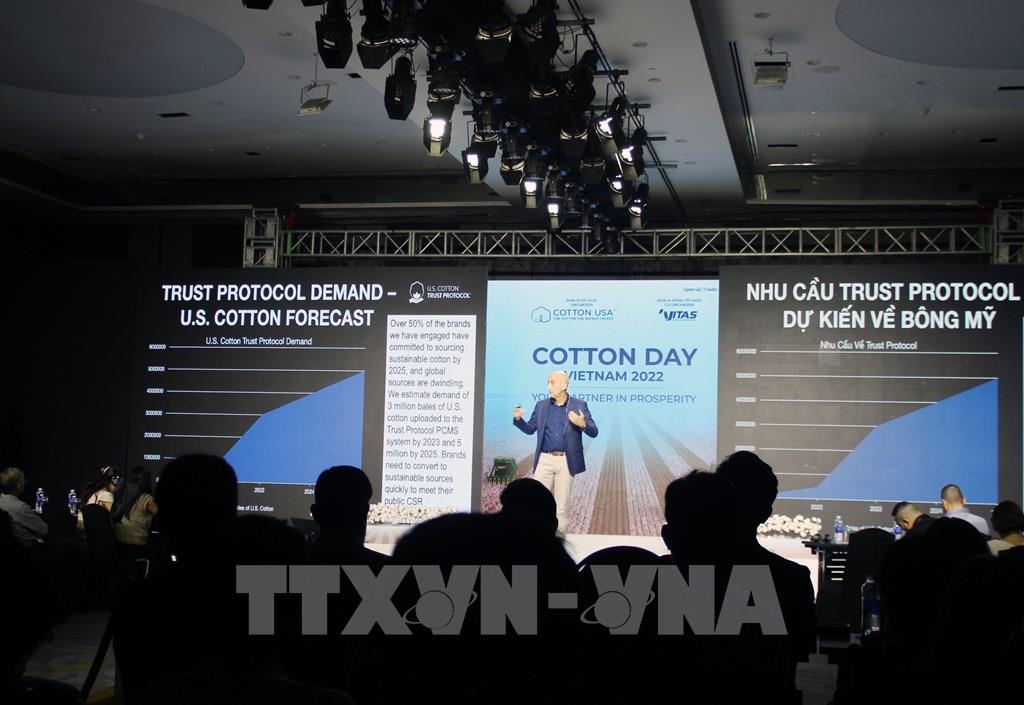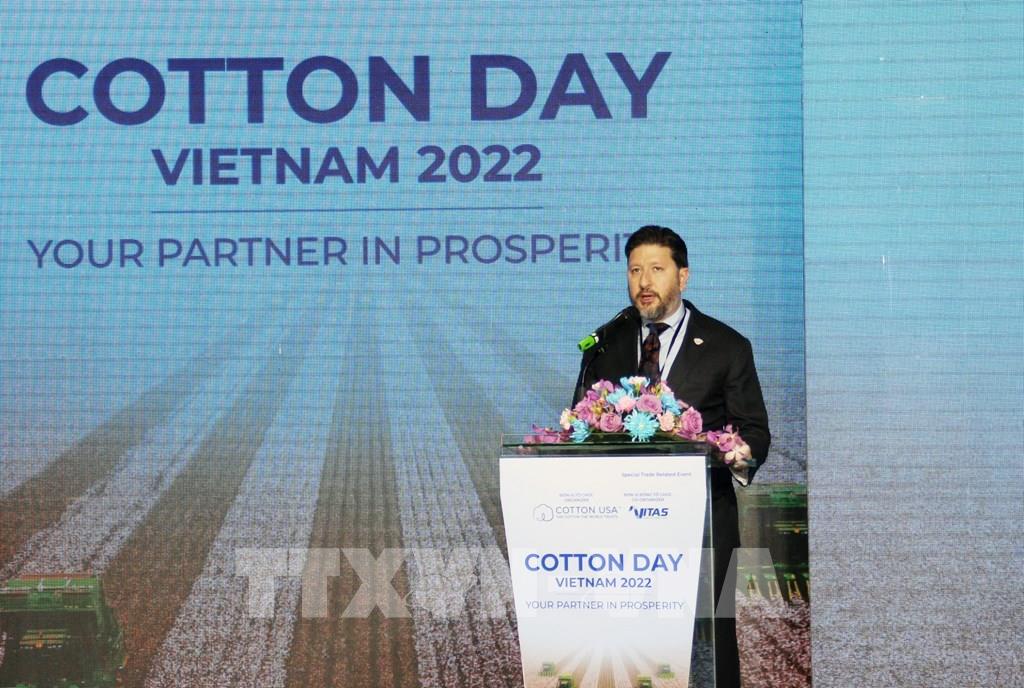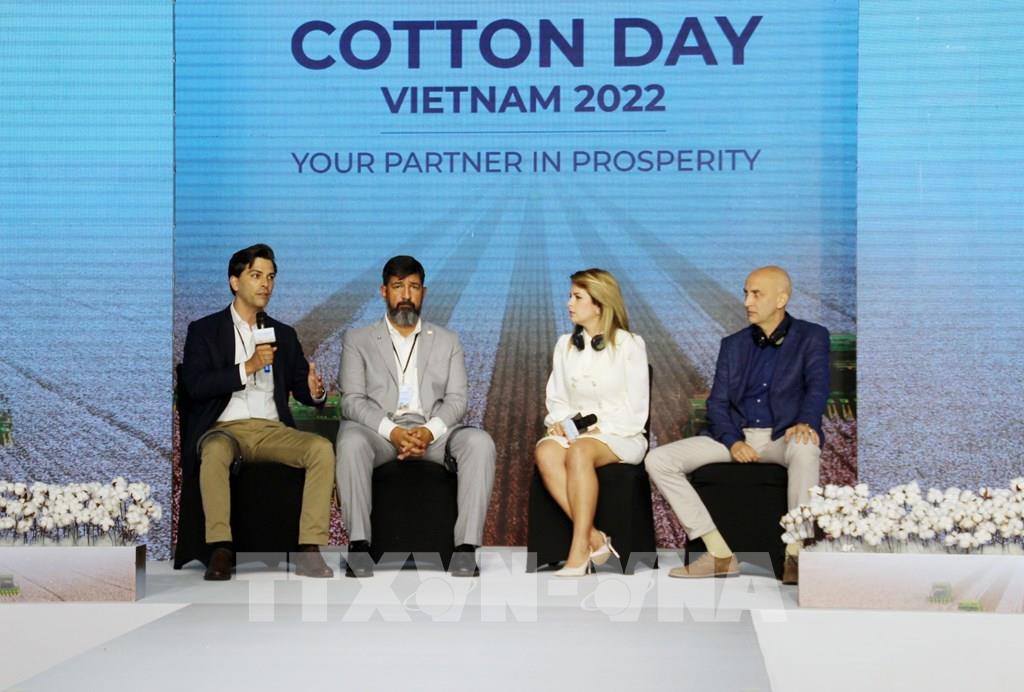On the afternoon of September 4, at the Vietnam Cotton Day 2022, organized by the Vietnam Textile and Apparel Association (VITAS) and the American Cotton Association (CCI) in Ho Chi Minh City. In Ho Chi Minh City, experts said that in the new trends of the textile industry, verified data and transparent supply chains are the top factors that enhance the competitiveness of products. Sustainable cotton production will drive continuous improvement of the industry's key sustainability indicators

Experts from the US update new trends in the global textile market. Photo: My Phuong - VNA
CCI President Carlos Garcia, Vietnam is one of the 2nd largest US cotton import markets in the world and is also identified as an important market for this material.
This year, Vietnam Cotton Day is back in a direct form with the participation of many experts, suppliers and manufacturers of cotton materials from the US who will update information and share market trends. and promote cooperation opportunities in the textile and garment industries of Vietnam and US cotton.

Mr. Benjamin Petlock, Senior Agricultural Attaché, US Consulate General in Ho Chi Minh City. Ho Chi Minh City updates information on trade cooperation between Vietnam and the US. Photo: My Phuong - VNA

VITAS President Vu Duc Giang shared that Vietnam's textile and garment industry in 2022 has set an export target of 42-43 billion USD. To ensure the set goals, Vietnam's textile and garment industry cannot help but attach itself to the supply of raw materials; in which, there is cotton; regulations on product traceability in the import market...
Therefore, Vietnamese textile and garment enterprises urgently need to provide information on the source of raw materials, specifically cotton in the near future, as well as market prediction reports for the period 2023-2024. In addition, Vietnam's textile and garment industry also has a need to approach the transfer of spinning technology in a new trend, in order to create a diversified yarn line that can adapt to the development requirements of the global fashion industry.

Some other experts said that the factors affecting the international cotton market, especially export supply and low demand, are concerns about inflation, interest rate hikes, and slow economic growth. At the same time, the US cotton supply is low, and other cotton-growing countries are affected by the weather...
CCI CEO updated the forecast that in the coming time, more and more global brands and retailers will require their cotton products imported to the US and EU to be sustainable and in a transparent supply chain. verified to be free of forced labor. In the last few years, the media has continuously reported on forced labor in the production supply chain, so many governments and countries are interested.
In 2022, thousands of textile and garment shipments from countries importing to the US were detained by the Customs Department of this country to check the origin under the Uyghur Forced Labor Act (UFLPA). Currently, the American Cotton Association has built a traceability system and modern technology to support clear traceability in all supply chains.
My Phuong/TTXVN
https://bnews.vn/tang-canh-tranh-bang-minh-bach-chuoi-cung-ung-xuat-khau-det-may/260822.html
bnews